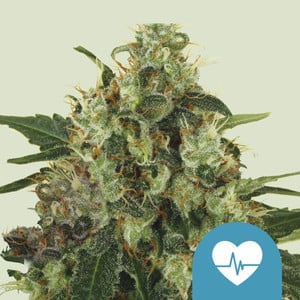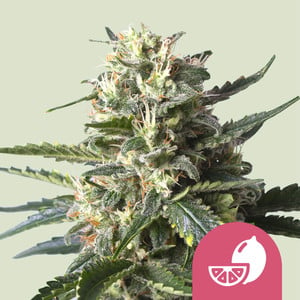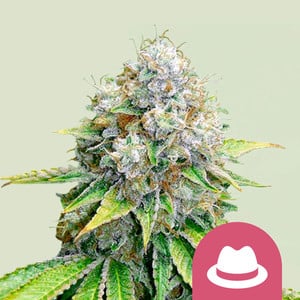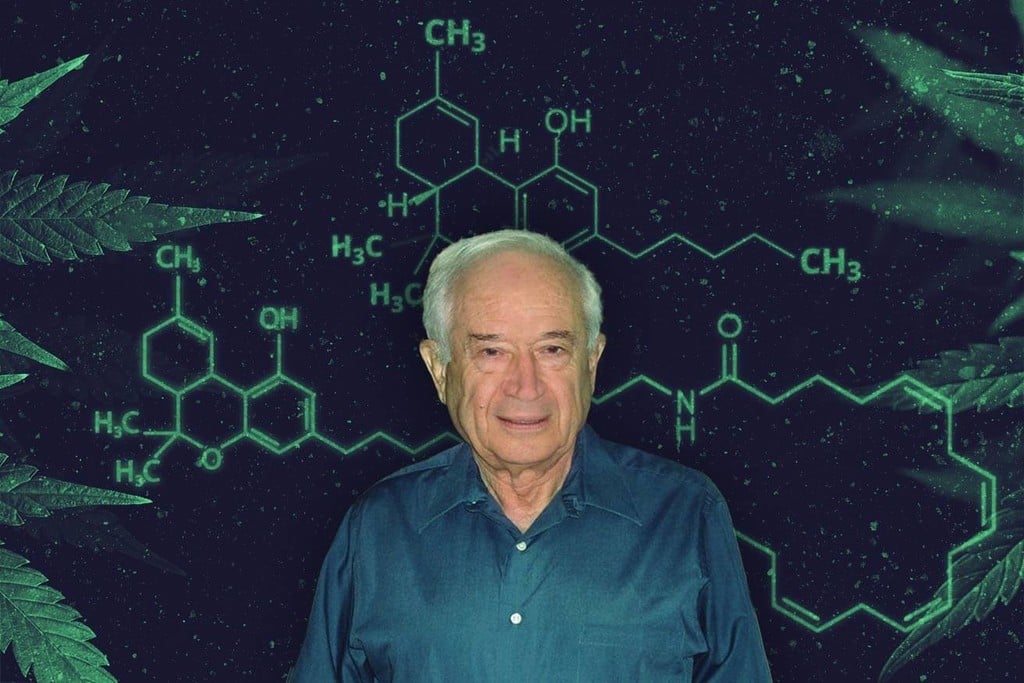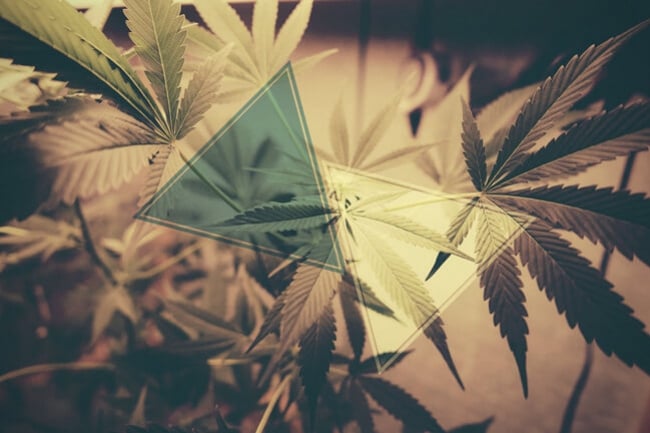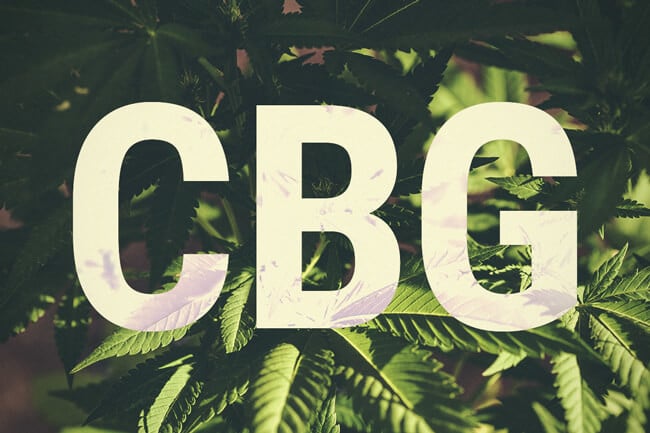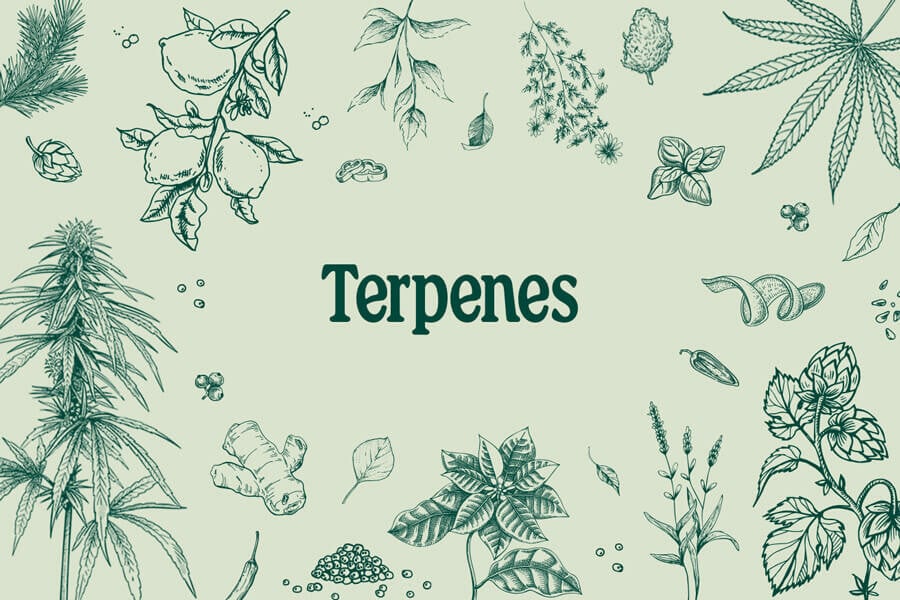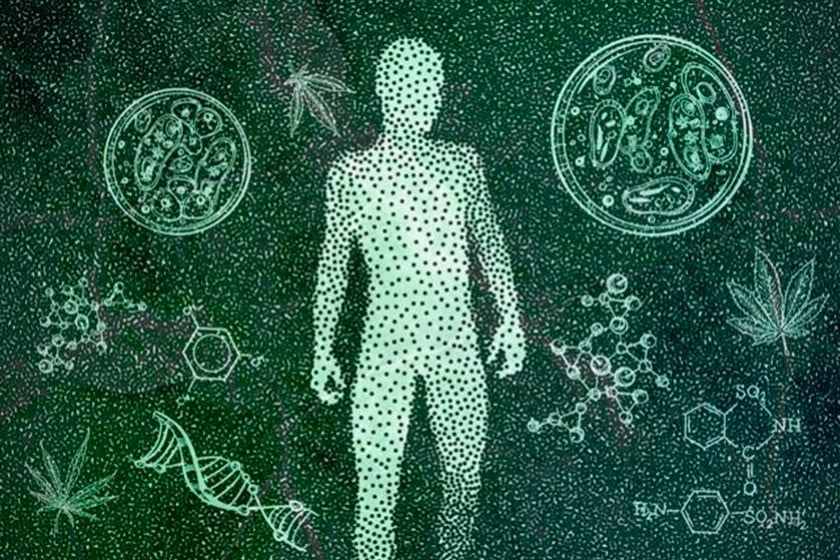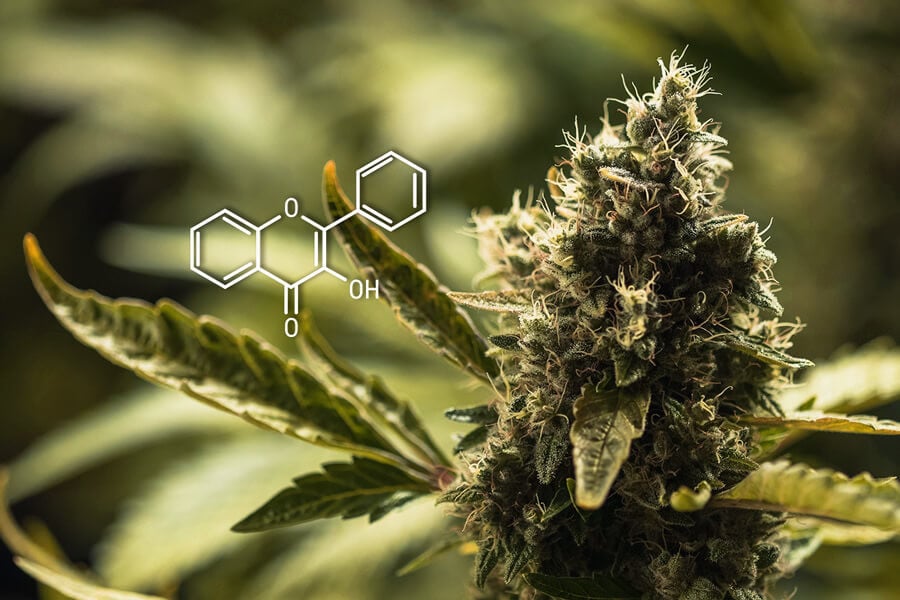.
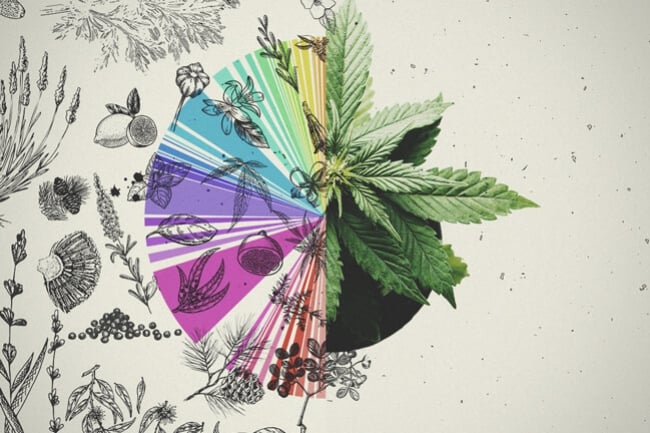
The Entourage Effect: Potential Synergy Between Cannabinoids & Terpenes
Keep reading to learn about the unique phenomenon of the "entourage effect". There's more to cannabis than just THC, or CBD for that matter!
Understanding the cannabis "entourage effect".
Contents:
- What is the entourage effect?
- There’s more to cannabis than cannabinoids
- How is this beneficial for us?
- Evidence for the entourage effect
- Entourage effect controversy
- How thc and cbd interact
- Full spectrum products
- How to use terpenes to enhance the entourage effect
- Put the entourage effect to the test with these 3 rqs strains
Most cannabis users are familiar with the two main cannabinoids: THC is what gets you high, and CBD is non-psychotropic.
But it is now believed that the specific effects of cannabis—including therapeutic effects—aren’t just due to a single cannabinoid in isolation, or to cannabinoids in general for that matter.
In fact, it is the combination of chemical constituents in cannabis that give it its full potential; this theory is known as the “entourage effect”.
What Is The Entourage Effect?
The entourage effect is the proposed mechanism by which substances in cannabis work synergistically to exert distinct effects.
In lay terms, the entourage effect claims that the cannabis phytocomplex (the group of chemicals in cannabis plants) is more effective in unison than it is when one chemical is used in isolation.
As an example, let’s look at how THC interacts with CBD. Taken alone, THC has the potential to exert its full range of psychoactive effects, including side effects like anxiety and paranoia.
CBD, on the other hand, is believed to mediate the “psychoactive ceiling” of THC, making for a milder high with less potential for anxiety.
Here, THC and CBD work in concert to provide what many cannabis users believe to be a more balanced effect.


There’s More To Cannabis Than Cannabinoids
The entourage effect goes far beyond the interaction between THC and CBD, though. It is also thought that other cannabis compounds play a key role in the plant’s full profile of effects.
-
Terpenes
Secondary to cannabinoids, terpenes are suggested to play the next-largest role in the entourage effect.
Terpenes are aromatic compounds in cannabis that act as natural insect repellents and give cannabis its characteristic smell. They are also found in many other plants, flowers, and fruits.
Linalool, for example, is a terpene with a lavender and citrus scent. This terpene is thought to have a sedating effect, and may amplify the relaxing effect of CBD.
Likewise, the terpenes α- and β-pinene, which give cannabis a pine forest-like scent, are also thought to have therapeutic properties. The list goes on...
-
Cannabinoids
Cannabinoids are chemical compounds that act chiefly on the endocannabinoid system (ECS), a network of cannabinoid receptors found throughout the body of mammals and other animals.
Internal cannabinoids—"endo"-cannabinoids—are produced by the body to help regulate various physiological functions. But, the system can also be greatly influenced by “phyto”-cannabinoids—those from the cannabis plant.
THC and CBD are the most well-known, although there are dozens of other cannabinoids in cannabis.
It appears that cannabinoids may be influenced by terpenes. Seeing how every cannabis strain has at least a slightly different composition of terpenes and cannabinoids, the entourage effect might explain why particular strains display distinct effects.
Yet, we are still in the early stages of research when it comes to fully elucidating the various substances in cannabis, so it’s unclear exactly how individual terpenes might interact with various cannabinoids.
| Components | |
|---|---|
| Cannabigerol (CBG) | |
| Cannabichromene (CBC) | |
| Other Cannabidiols (CBD) | |
| Other Tetrahydrocannabinols (THC) | |
| Cannabinol (CBN) | |
| Cannabinodiol (CBDL) | |
| Cannabicyclol (CBL) | |
| Cannabielsoin (CBE) | |
| Cannabitriol (CBT) | |
| Nitrogenous compounds (27) | |
| Amino acids (18) | |
| Proteins (3) | |
| Glycoproteins (6) | |
| Sugars and related compounds (34) | |
| Enzymes (2) | |
| Hydrocarbons (50) | |
| Simple alcohols (7) | |
| Aldehydes (13) | |
| Ketones (13) | |
| Simple acids (21) | |
| Fatty acids (22) | |
| Simple esters (12) | |
| Lactones (1) | |
| Steroids (11) | |
| Terpenes (120) | |
| Non-cannabinoid phenols (25) | |
| Flavonoids (21) | |
| Vitamins (1) | |
| Pigments (2) | |
| Other elements (9) | |
| Components | ||
|---|---|---|
| Cannabigerol (CBG) | Cannabichromene (CBC) | Other Cannabidiols (CBD) |
| Other Tetrahydrocannabinols (THC) | Cannabinol (CBN) | Cannabinodiol (CBDL) |
| Cannabicyclol (CBL) | Cannabielsoin (CBE) | Cannabitriol (CBT) |
| Nitrogenous compounds (27) | Amino acids (18) | Proteins (3) |
| Glycoproteins (6) | Enzymes (2) | Sugars and related compounds (34) |
| Hydrocarbons (50) | Simple alcohols (7) | Aldehydes (13) |
| Ketones (13) | Simple acids (21) | Fatty acids (22) |
| Simple esters (12) | Lactones (1) | Steroids (11) |
| Terpenes (120) | Non-cannabinoid phenols (25) | Flavonoids (21) |
| Vitamins (1) | Pigments (2) | Other elements (9) |
How Is This Beneficial For Us?
The entourage effect opens up new approaches to using cannabis not just recreationally, but for medicinal purposes in particular.
In the past, the terpene profiles of cannabis strains weren't considered relevant, outside the realm of scent and taste. Now, terpenes are becoming star molecules in their own right, and have definitely caught the attention of breeders and manufacturers of cannabis medicines and supplements.
As an early example of the possibilities provided by the entourage effect, let’s look to the first commercial, FDA-approved cannabinoid medicine, Sativex, a medication for MS spasms.
The producers of Sativex found a composition of both THC and CBD, alongside various terpenes and flavonoids, to be more effective in relieving symptoms than one cannabinoid in isolation.
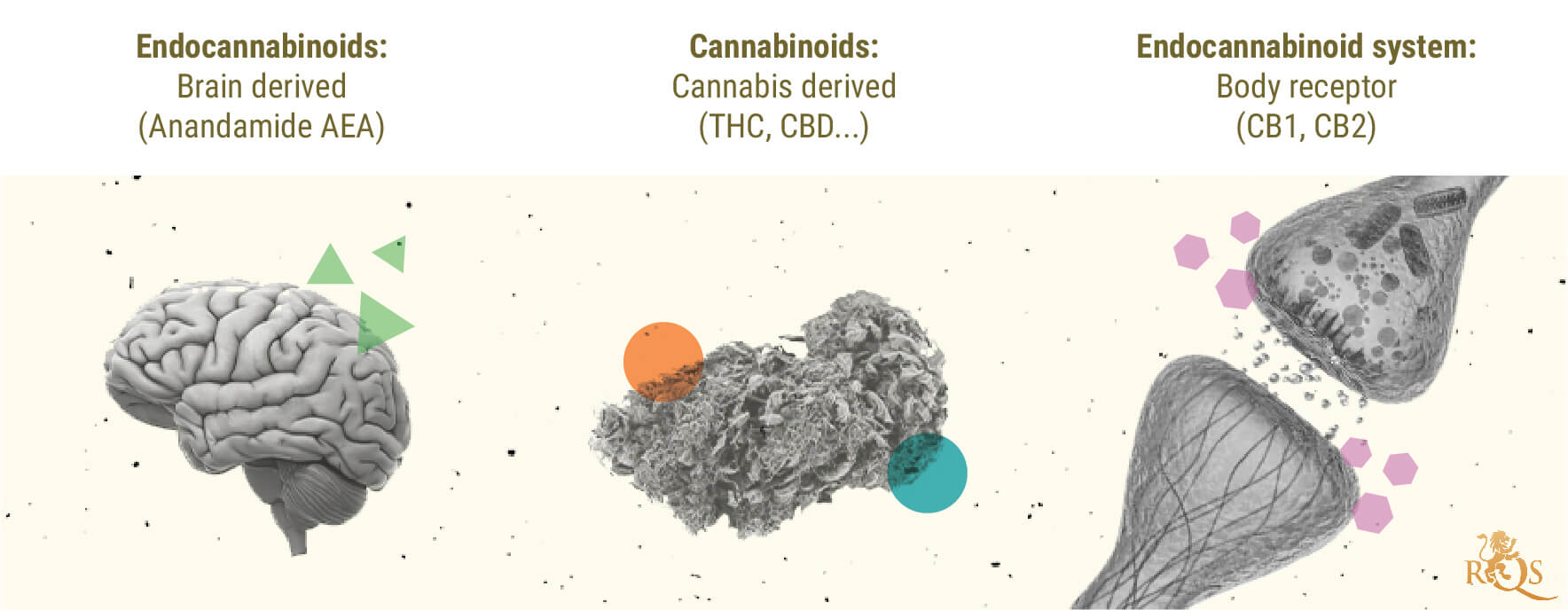
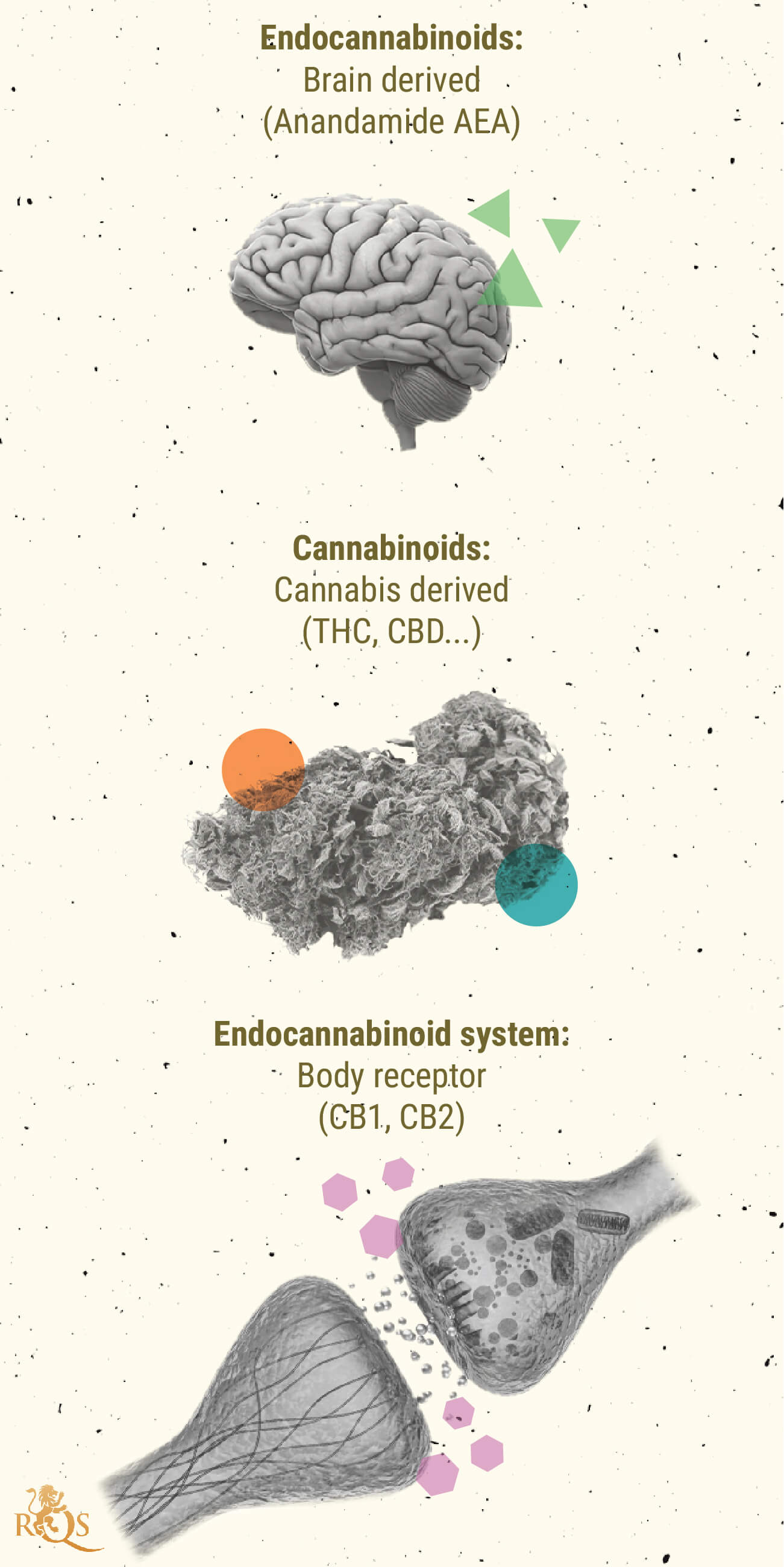
Evidence for the Entourage Effect
Researchers are still getting to grips with the potential interplay between cannabis constituents. Ongoing studies[1] are exploring if CBD and THC work well side by side in animal models of neuropathic pain. As well as looking for improvements in symptoms, scientists are keen to see if these molecules work together to offset adverse events.
But cannabinoids aren’t the only constituents that might work together in concert. Cannabis flowers also contain over 150 terpenes[2]. As well as potentially synergising with each other, these aromatic molecules could theoretically affect the action of other chemical classes—cannabinoids included. So far, researchers predict[3] that many major cannabis terpenes interact with CBD, including limonene, linalool, pinene, and caryophyllene.
In lab tests, it was found that both α- and β-pinene displayed[4] synergistic antitumour properties alongside the chemotherapy medication Paclitaxel.
Entourage Effect Controversy
It bears mentioning that research in regards to the entourage effect is not conclusive. Considered a theory, not a fact, there is certainly evidence to support it, but some are cautious to credit cannabis with this ability.
Interestingly, a 2019 study[5] found that certain terpenes may not interact with CB1 or CB2 cannabinoid receptors as previously thought. This, in turn, suggests that the entourage effect, if it exists, works via a different mechanism, or by multiple mechanisms.
According to the study, “None of the six of the most common terpenoids in cannabis directly activated CB1 or CB2, or modulated the signalling of the phytocannabinoid agonist Δ⁹-THC. These results suggest that if a phytocannabinoid-terpenoid entourage effect exists, it is not at the CB1 or CB2 receptor level”.
Furthermore, as isolated cannabinoids continue to flood the market, it invokes the question of which product is best for which scenario. Those sceptical about the medicinal potential of cannabis might be quick to refute the entourage effect, but data is mounting in its favour.
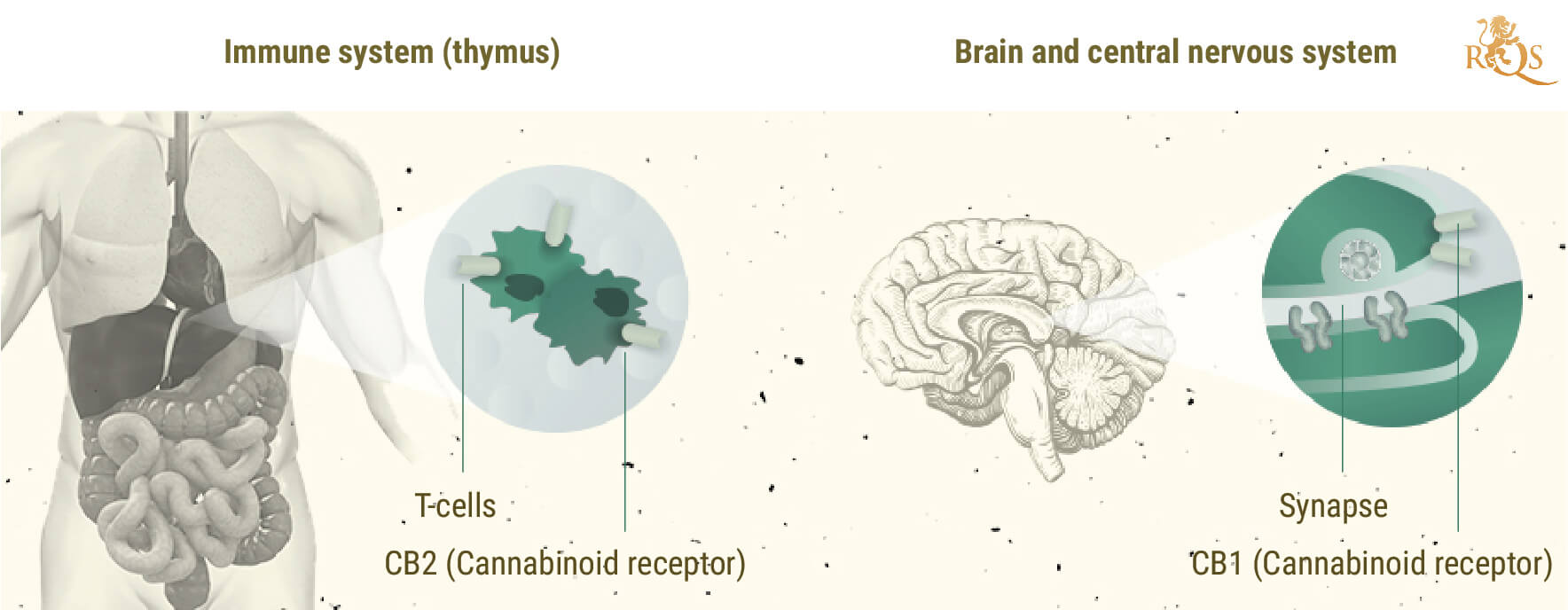
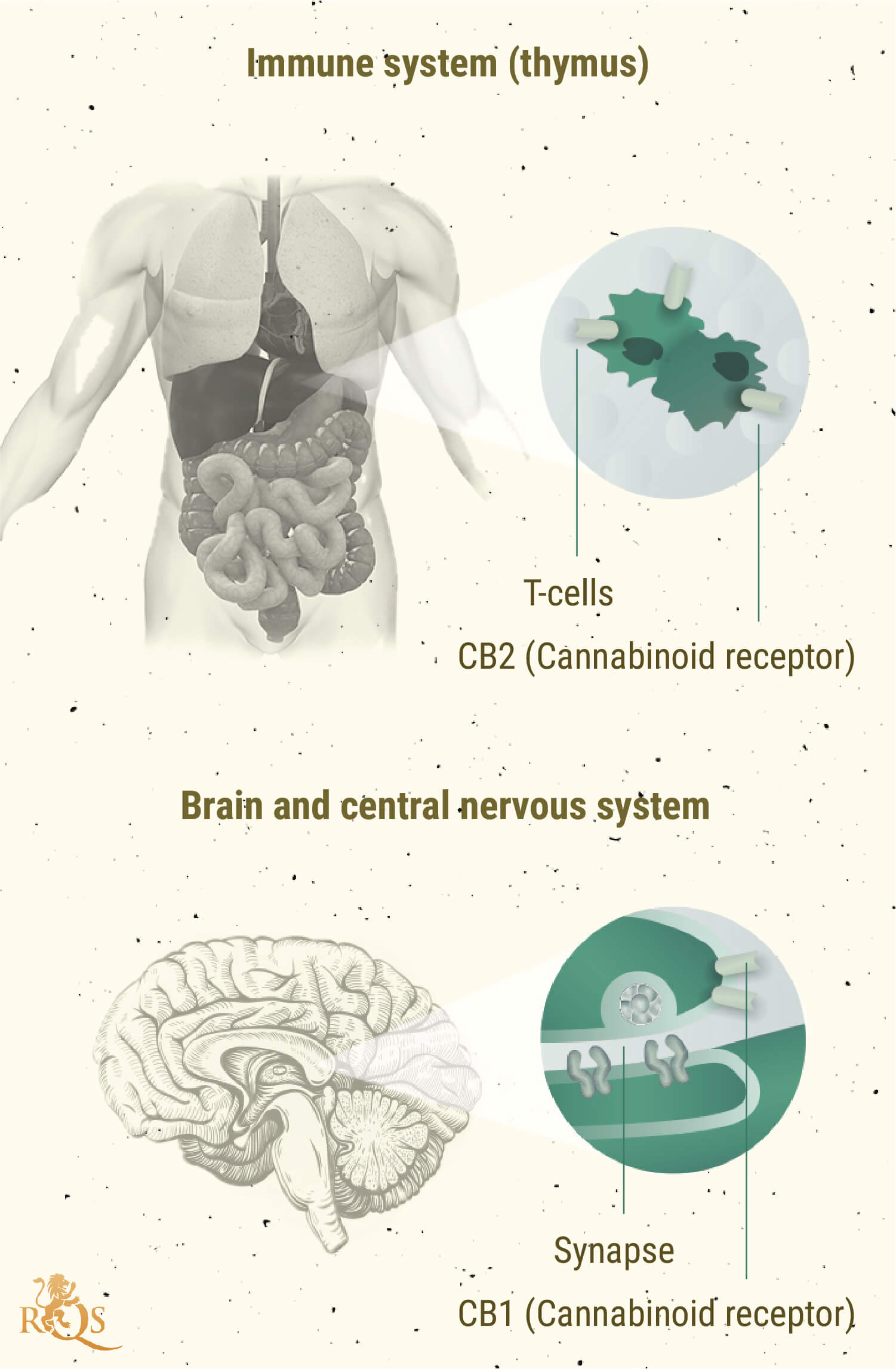
-
Terpenes are Cannabimimetic
Recent research has emerged that supports the entourage effect in cannabis. A 2021 study conducted at the University of Arizona Health Sciences discovered further evidence that terpenes are cannabimimetic, meaning they mimic the effects of cannabinoids such as THC[6]. Rather than creating a synergistic effect at peripheral receptors, these aromatic molecules appear to directly interact with the CB1 receptor—the site where THC exerts its psychotropic properties.
The researchers focused their attention on the following cannabis-derived terpenes (listed with their associated aromas):
| α-Humulene | Earthiness, wood, spice |
| Geraniol | Floral, citrus, fruit, sweetness |
| Linalool | Lavender, lemon, orange |
| β-Pinene | Pine, earthiness, rosemary |
| α-Humulene | Earthiness, wood, spice |
| Geraniol | Floral, citrus, fruit, sweetness |
| Linalool | Lavender, lemon, orange |
| β-Pinene | Pine, earthiness, rosemary |
The research team first tested these molecules in mice, and found them to produce effects typical of cannabinoids. After administering chemicals that block cannabinoid receptors, they noticed a decrease in their effects, suggesting the terpenes were acting through these sites. They also carried out similar tests on cells, finding similar results.
These findings offer some serious credibility to support the entourage effect hypothesis. The researchers state that terpenes acting on CB1 could boost cannabinoid activity, and may enhance the holistic potential of cannabinoids. Future studies focused on specific terpenes and cannabinoid pairings will help scientists to determine exactly how these phytochemicals work together.
How THC And CBD Interact
Now that you’re more familiar with the entourage effect, let’s revisit the relationship between CBD and THC. How is it that CBD seems to both “tame” the psychoactive effects of THC and enhance its beneficial qualities?
To start, CBD interacts with cannabinoid receptors differently than THC. Instead of binding directly to CB1 or CB2, it only modulates their activity.
Specifically, CBD works against the production of an enzyme that breaks down the endocannabinoid anandamide. In this way, CBD increases the amount and duration of this natural cannabinoid in the brain, but it doesn’t directly stimulate CB receptors.
Still, anandamide binds to CB1 receptors, so CBD does exert relevant indirect actions.
That said, when taken together, CBD is thought to weaken THC’s bond with the CB1 receptor, resulting in less of a psychoactive “high”. In particular, many users report less anxiety and paranoia when using a strain with a balanced CBD:THC ratio.
Full Spectrum Products
Given what we know about the entourage effect, it stands to reason that products containing a variety of cannabinoids and terpenes might be more effective than isolated THC or CBD products, for example.
Indeed, these “full spectrum” cannabis products, such as oils, tinctures, and other extracts, harness the best chemical compounds in cannabis while discarding the waxes, fats, and other unnecessary material.
Looking ahead, it appears that full spectrum products will continue to gain steam, in hopes of developing treatments that can be tailored to the individual.
Right now, some users have access to regulated cannabis products containing distinct ratios of CBD:THC alongside various terpenes. With different ratios available, users are more able to control their experience.
How To Use Terpenes To Enhance the Entourage Effect
Not only do cannabis flowers contain a complex array of chemicals, but many of these molecules work together to produce more powerful effects. Although cannabinoids such as THC and CBD form the core of the cannabis experience, terpenes are what make each strain unique.
Cannabis researchers have coined the term “entourage effect” to describe how cannabis constituents work in synergy. We’re only just beginning to understand the magnitude of this chemical dance. With over 200 terpenes and 100 cannabinoids within the plant, the number of possible molecular interactions is vast.
So far, early research has shown that some common terpenes work side by side with cannabinoids to amplify their effects[7].
For example, the refreshing terpenes linalool, pinene, and limonene appear to enhance the cognitive effects of CBD. Additionally, linalool and THC work together to soothe the muscles, and CBD and limonene team up to reduce jitters and elevate the mood.
Each strain offers something different according to its unique terpene profile. While two strains can contain THC, one stones the body, while the other energises the mind. Terpenes are responsible for this psychoactive diversity.
Cannabis users can take on the role of an alchemist to influence the effects they feel from weed. You don’t have to settle for the chemical makeup of the flower in front of you. By harnessing the power of terpenes from other sources, you can tweak and influence each and every high you experience.
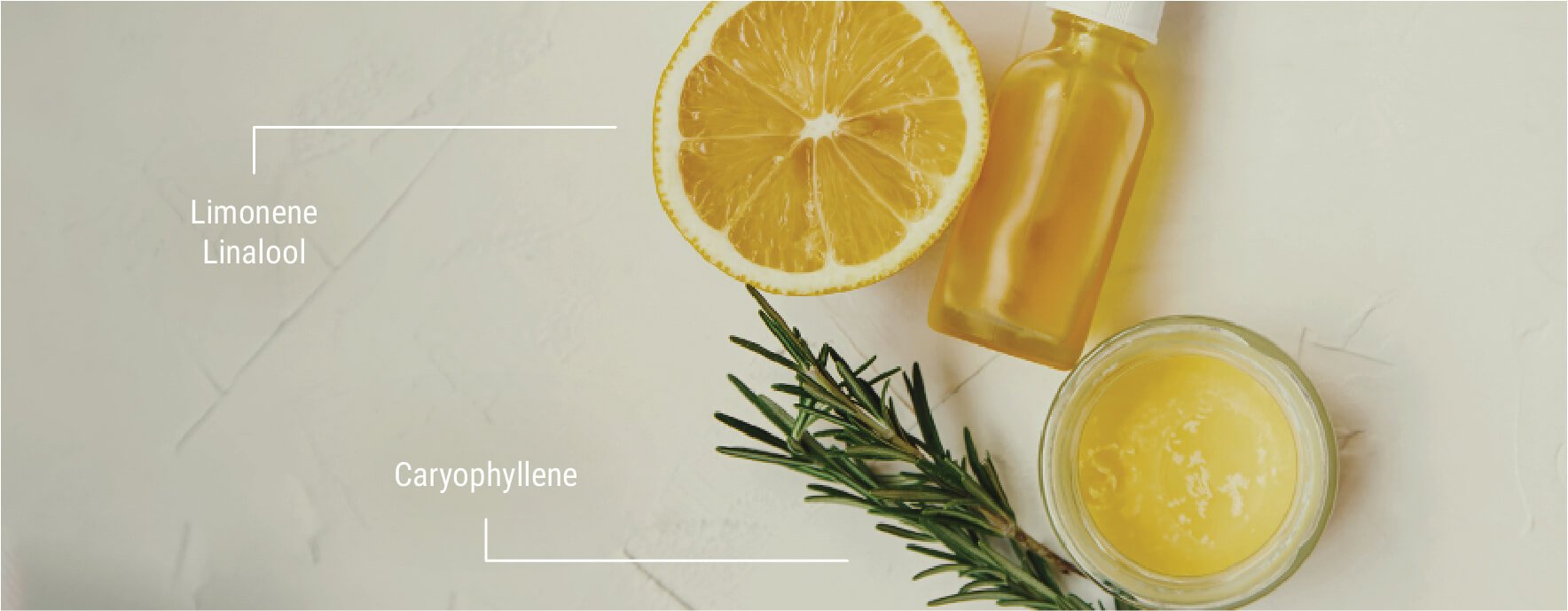
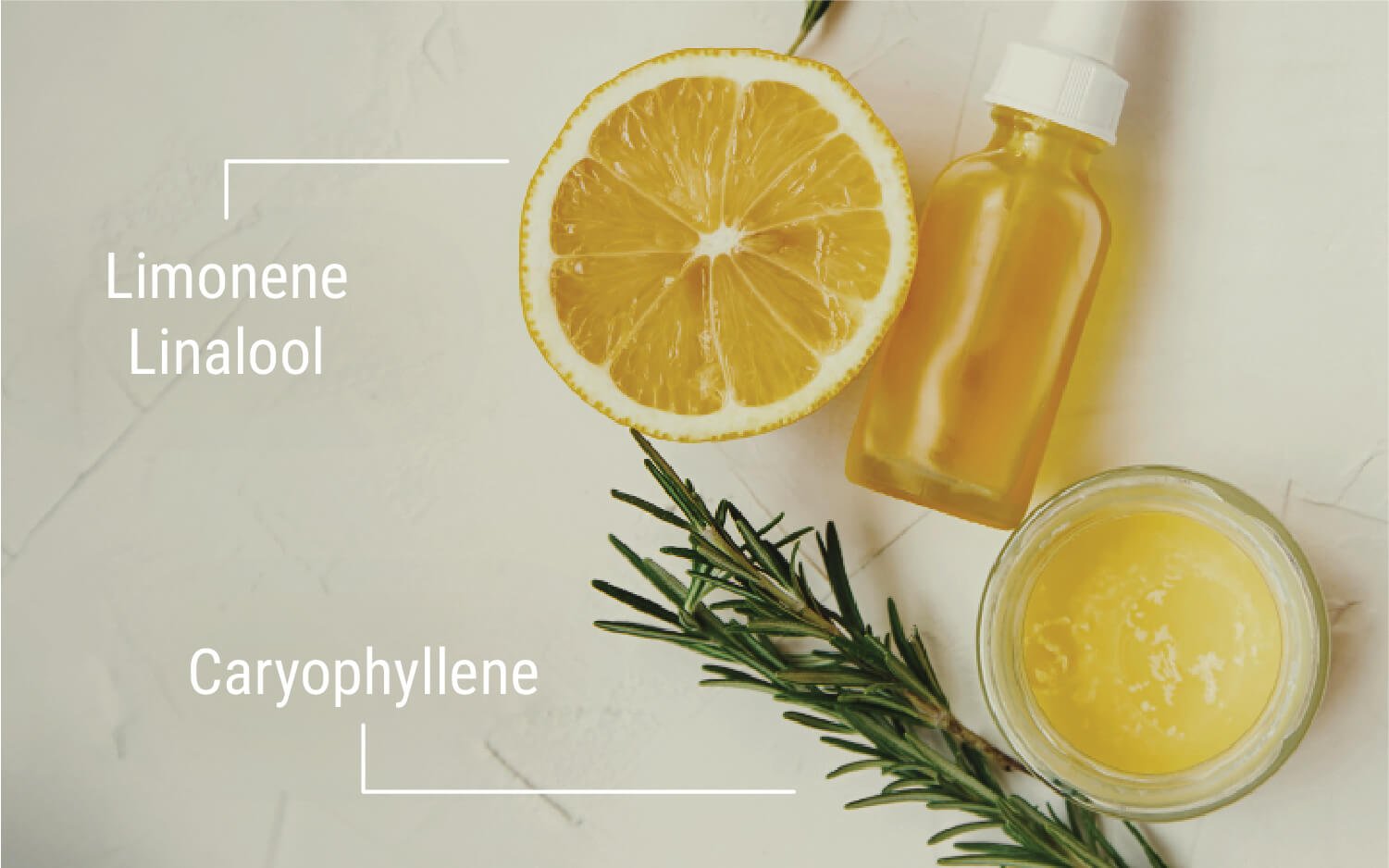
-
Where Are Terpenes Found Outside of Cannabis?
Terpenes occur all throughout the plant kingdom. In total, there are approximately 55,000 of these aromatic molecules found in a very long list of herbs, trees, fruits, vegetables, and other plant species.
Many of the terpenes that give cannabis its characteristics scents are also found in a wide variety of common plants and culinary herbs.
Limonene and linalool are found in citrus fruits. Caryophyllene, the most abundant cannabis-derived terpene, occurs in rosemary, and hops contain the terpene humulene in high quantities.
You’ll find the sleepy terpene myrcene, partly responsible for the classic "couch-lock" effect, in lemongrass, basil, and mango.
-
How To Use Terpenes
Essential oils, other herbs, and topical formulas are simple and easy ways to use additional terpenes alongside your favourite strains.
| Essential Oils | Essential oils are potent extracts that instantly fill up a room with aromatic terpenes. There are hundreds of formulas available to induce different moods and states of consciousness. Choose a blend that appeals to you and load it into a diffuser. As you toke away at your favourite strains, additional terpenes will fill up the air, enter your lungs, and add to the high. |
| Herbs | Other herbs are excellent sources of terpenes. Select herbs based on the feelings you want to experience. For example, for a clear-headed and relaxing effect, brew a batch of rosemary or lemon balm tea to sip alongside your joints and bowls. |
| Topical | Topical cannabis won’t get you high, but it does the skin wonders. We have a whole system dedicated to cannabis within the skin, and compounds within the plant help to nourish and soothe our largest organ. Mix in some essential oils in your topicals to customise the effect you’re after—just make sure your oils are safe to apply topically. |
| Essential Oils |
| Essential oils are potent extracts that instantly fill up a room with aromatic terpenes. There are hundreds of formulas available to induce different moods and states of consciousness. Choose a blend that appeals to you and load it into a diffuser. As you toke away at your favourite strains, additional terpenes will fill up the air, enter your lungs, and add to the high. |
| Herbs |
| Other herbs are excellent sources of terpenes. Select herbs based on the feelings you want to experience. For example, for a clear-headed and relaxing effect, brew a batch of rosemary or lemon balm tea to sip alongside your joints and bowls. |
| Topical |
| Topical cannabis won’t get you high, but it does the skin wonders. We have a whole system dedicated to cannabis within the skin, and compounds within the plant help to nourish and soothe our largest organ. Mix in some essential oils in your topicals to customise the effect you’re after—just make sure your oils are safe to apply topically. |
Put the Entourage Effect to the Test With These 3 RQS Strains
If we’ve sparked your interest in the entourage effect, consider these three strains, each of which is packed with cannabinoids and terpenes.
-
Medical Mass
Medical Mass is a strain that puts the entourage effect to work. As well as providing a variety of terpenes that deliver sweet and spicy aromas, it offers a balanced CBD:THC ratio of 1:1, with each molecule occurring at levels of approximately 10%. This molecular concoction produces a clear-headed effect that promotes a calm, motivated state of mind.
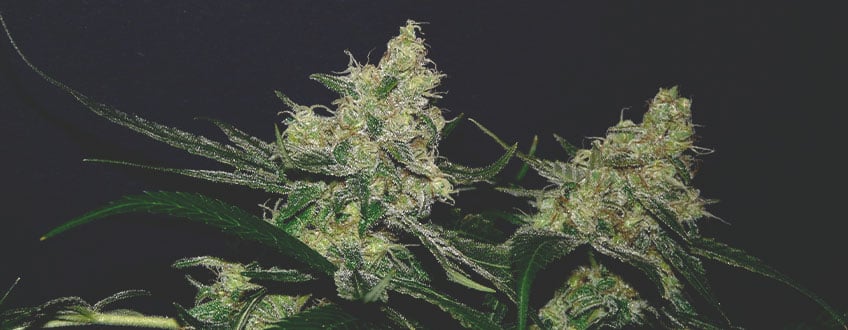
Medical Mass
|
|
Critical Mass x CBD dominant plant |
|
|
500 - 550 gr/m2 |
|
|
60 - 100 cm |
|
|
10 - 11 weeks |
|
|
THC: 10% |
|
|
Sativa 40% Indica 60% |
|
|
500 - 550 gr/plant |
|
|
120 - 150 cm |
|
|
Late September |
|
|
Calming, Physically Relaxing |
-
Lemon Shining Silver Haze
Lemon Shining Silver Haze is a THC-rich cross between Lemon Skunk and Shining Silver Haze that is particularly high in the terpene limonene. This results in a sour, sweet, fresh, and skunky aroma as well as an energetic yet lucid effect. Euphoria and motivation will surge, without feelings of anxiety creeping in.
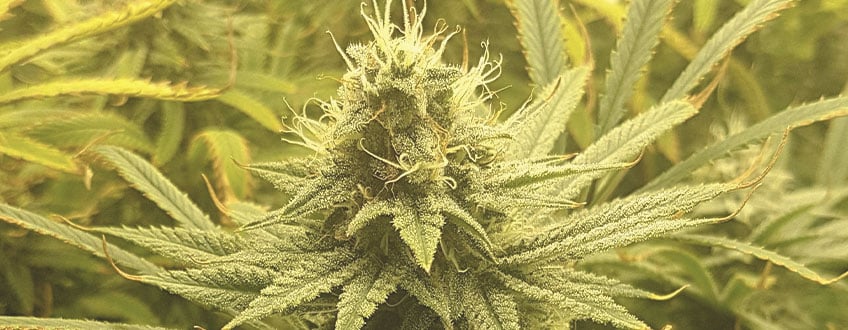
Lemon Shining Silver Haze
|
|
Lemon Skunk x Shining Silver Haze |
|
|
600 - 650 gr/m2 |
|
|
80 - 140 cm |
|
|
9 - 10 weeks |
|
|
THC: 21% |
|
|
Sativa 75% Indica 25% |
|
|
650 - 700 gr/plant |
|
|
130 - 170 cm |
|
|
Middle of October |
|
|
Balanced, Clear, Stoned |
-
OG Kush
OG Kush is renowned for its strong high and dank aroma. The strain is massively powerful, backed by high levels of THC, medium levels of CBD, and humulene, a terpene found in various amounts in all cannabis varieties. Interestingly, remedies in ancient Chinese medicine were notably high in humulene. OG Kush delivers a high that is potent yet wholesome thanks to its balance of chemical constituents.
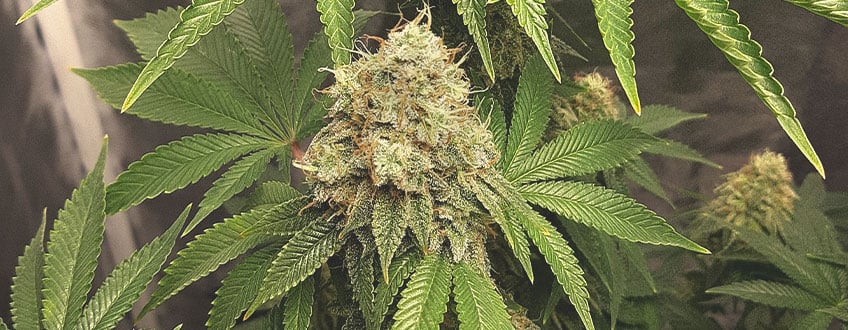
OG Kush
|
|
Chemdawg x Lemon Thai x Pakistani Kush |
|
|
425 - 475 gr/m2 |
|
|
90 - 160 cm |
|
|
7 - 9 weeks |
|
|
THC: 19% |
|
|
Sativa 25% Indica 75% |
|
|
500 - 550 gr/plant |
|
|
180 - 220 cm |
|
|
October |
|
|
Calming, Uplifting |
- Cannabis constituent synergy in a mouse neuropathic pain model - PubMed https://www.ncbi.nlm.nih.gov
- Terpenes in Cannabis sativa – From plant genome to humans https://www.sciencedirect.com
- Taming THC: potential cannabis synergy and phytocannabinoid-terpenoid entourage effects https://www.ncbi.nlm.nih.gov
- Synergistic antitumor effect of α-pinene and β-pinene with paclitaxel against non-small-cell lung carcinoma (NSCLC) - PubMed https://www.ncbi.nlm.nih.gov
- Absence of entourage: Terpenoids commonly found in Cannabis sativa do not modulate the functional activity of Δ9-THC at human CB1and CB2 receptors | bioRxiv https://www.biorxiv.org
- Cannabis sativa terpenes are cannabimimetic and selectively enhance cannabinoid activity https://www.nature.com
- Taming THC: potential cannabis synergy and phytocannabinoid-terpenoid entourage effects https://www.ncbi.nlm.nih.gov


























